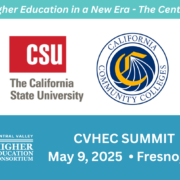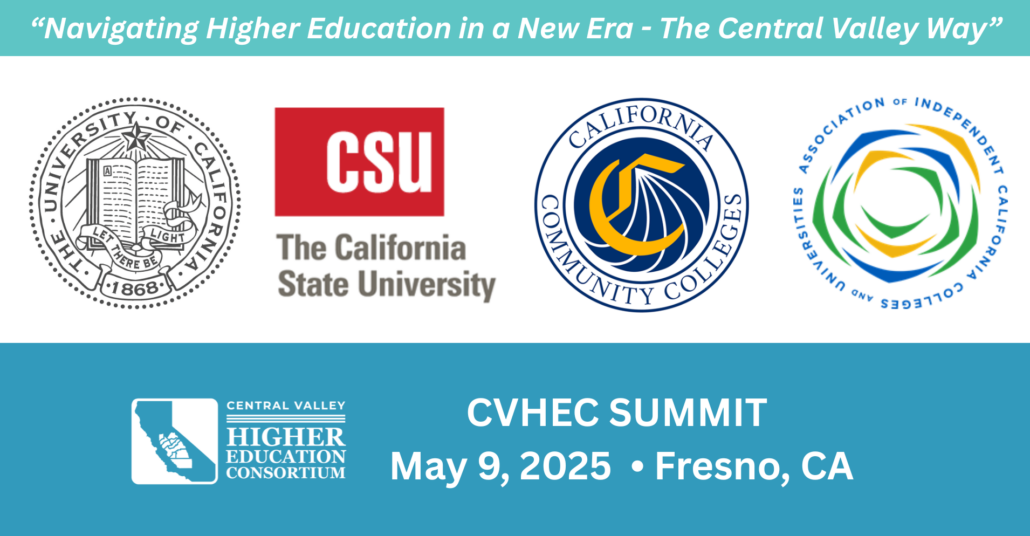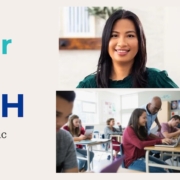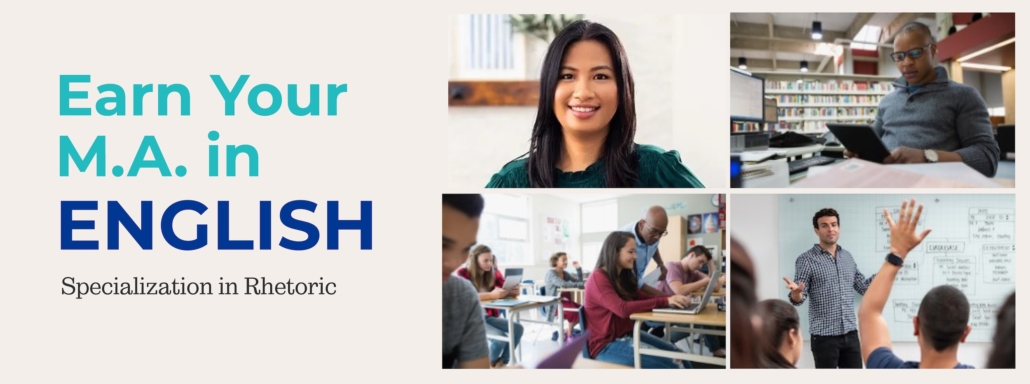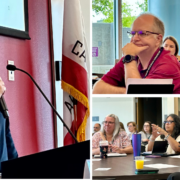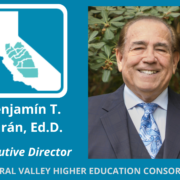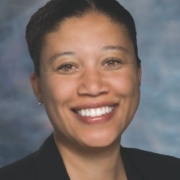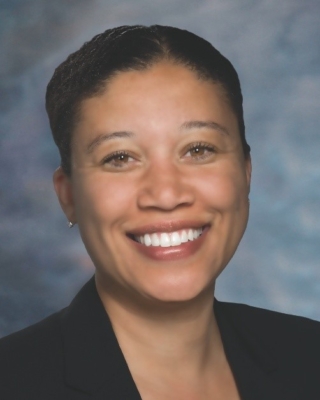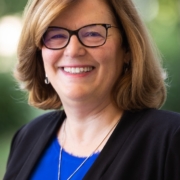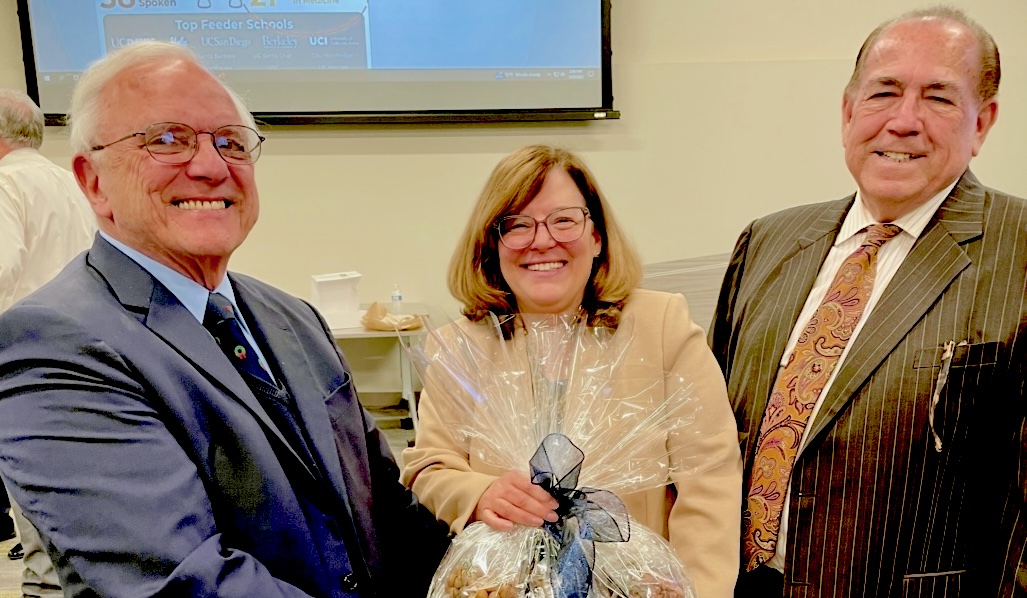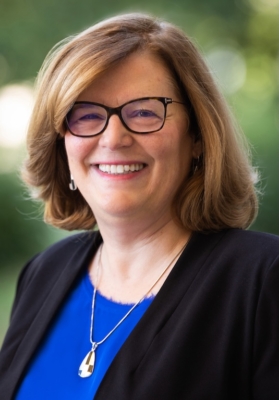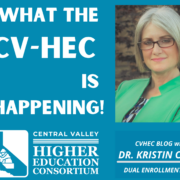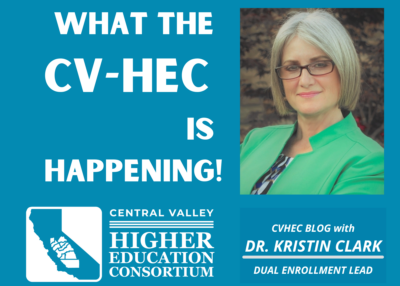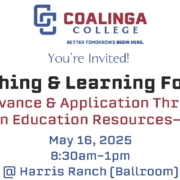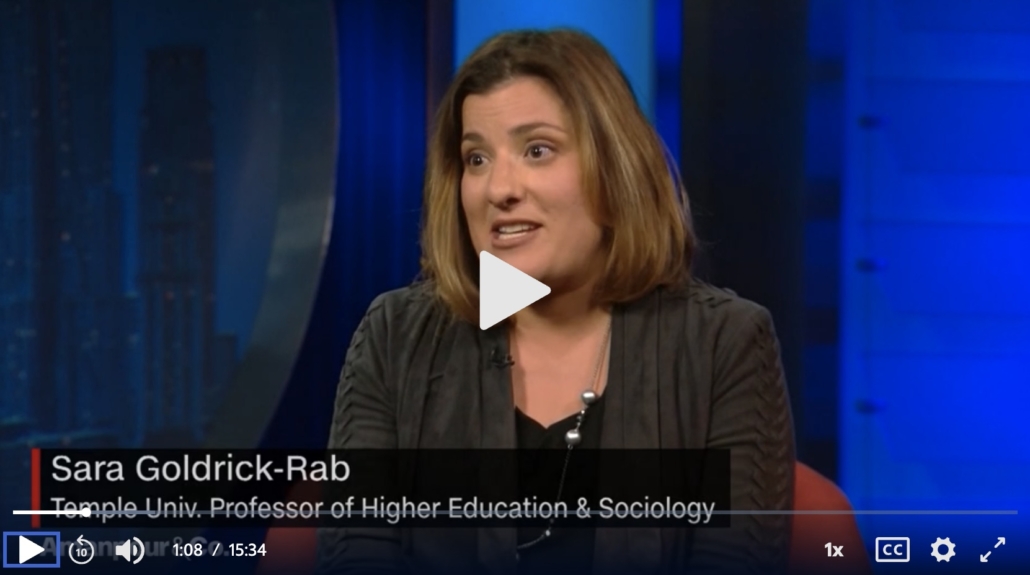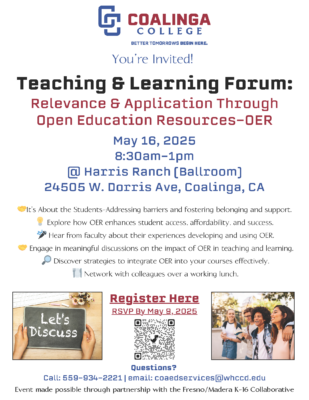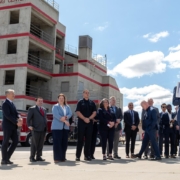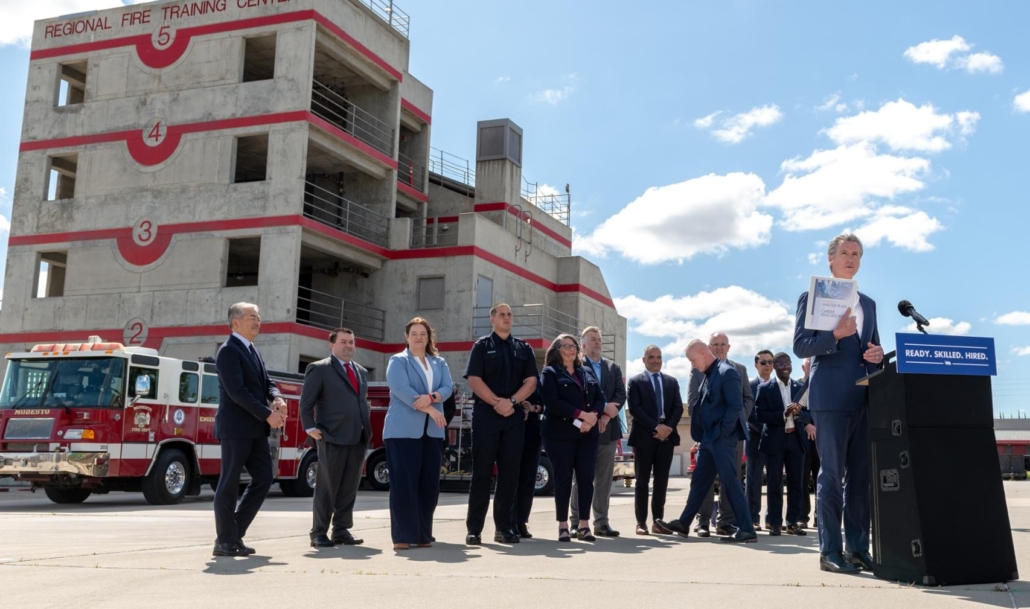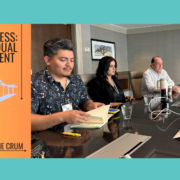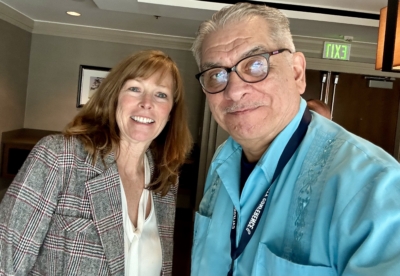“Bridge to Success: Navigating Dual Enrollment” Podcast
Episode 11: Interview with CVHEC
Feb. 25, 2025 – California Dual Enrollment Equity Conference (Sacramento CA)
CADEP • CLP • EdTrustWest
https://bit.ly/CDEpodcast-CVHECdualenrollment
Bridge to Success Navigating Dual Enrollment the bridge to success navigating dual enrollment podcasts explores dual enrollment success stories from around the state of California we will dive into inspiring stories best practices and expert insights to help students the gap between high school and college
Diane meets up with members of the Central Valley Higher Education Consortium at the California Dual Enrollment Equity Conference. They discuss the consortium’s initiative of providing funding to Math and English teachers to obtain their Master’s Degrees to teach dual enrollment courses.
[Diane Crum]
Welcome to the Bridge to Success, Navigating Dual Enrollment podcast, where we explore dual enrollment success stories from around the state. I’m your host, Diane Crum, Education Programs Consultant from the California Department of Education. Join us as we dive into inspiring stories, best practices, and expert insights to help students bridge the gap between high school and college.
Hello, today I am podcasting from the California Dual Enrollment Equity Conference in Sacramento, California. And I am joined by Central Valley Higher Education Consortium, who did a session here at the conference, and they wanted to also podcast and get their message out to a bigger audience. So I’m going to pass it to them to introduce themselves.
[Ben Duran]
Good afternoon, my name is Ben Duran. I’m the Executive Director of the Central Valley Higher Education Consortium, which you will also hear us refer to as CVHEC.
[Ginny Sandhu]
Hi, I’m Ginny Sandhu. I’m an English teacher at Sunnyside High School, and I’m also an instructor with Fresno City College.
[Angel Ramirez]
Hello, my name is Angel Ramirez. I’m the Operations and Finance Manager for CVHEC, so I’ll be speaking on the logistical side of this project.
[Diane Crum]
Okay, so as I mentioned, well thank you again for joining me here today and podcasting. And so, as we talked about, you did have a session here at the conference called MA Upskilling, and so I’m just going to turn it over to you to explain what that is and tell us your story.
[Ben Duran]
Yeah, I’d be happy to do that. Before I do that, I’ll turn it over to Angel and Ginny, and they’ll tell us more about the MA Upskilling project itself. But let me tell you how we got to it and who the Central Valley Higher Education Consortium is. It is a consortium of 28 colleges and universities in a 10-county region in Central California that stretches from Kern County all the way up to San Joaquin County.
And it includes community colleges. It includes California State Universities. It includes UC Merced, and it includes a number of independent colleges or universities, in addition to two medical schools.
So, the consortium was formed back in 2002 to bring people together as a convener, if you will, for higher education, to be able to look at higher education in the Central Valley with a single voice, to speak with a single voice, to talk about things that mattered for student success. So, we fast-forward to 2019 when there was a convening in the Central Valley around dual enrollment, this notion of creating a dual enrollment environment where high school students would be able to take college-level courses on their high schools, being taught by people with master’s degrees. So, at that convening, one of the topics that came up was, hey, there aren’t enough high school teachers holding master’s degrees in either mathematics or in English.
And so, as a result of that, we pursued, we started to go out and say, how can we go out and generate master’s degrees holding high school teachers who can teach for our local colleges? And that’s where the MA Upskilling Project was born. That’s where we came up with the idea of getting together with two of our universities who are in the consortium, two independent universities, National University and Fresno Pacific University, to deliver these programs to high school teachers.
Then came along the K-16 Collaborative, which provided funding for regions to improve education throughout. And as a result, we put in for an application, and as a result of that, we were granted a grant to be able to deliver master’s degrees to high school teachers through these two universities that I mentioned. And a little bit later, Angel will tell you more about the specifics of that.
But at this time, probably the people want to listen to Jenny, who is here as one of the participants in the MA Upskilling who earned her master’s degree in English. And so let me just turn it over to Jenny.
[Ginny Sandhu] Thank you, Ben.
Yeah, my experience was amazing, to say the least. When I first received an email from my department chair about the entire initiative, and at the time I was teaching AP courses, and I thought to myself, what could be better than joining a program, getting a degree that really hones my skills in becoming a better teacher for AP courses? And so I went through the entire program, and it was fully funded, which was amazing as well.
The university really understood the initiative, that this was a cohort of teachers who are working, so they were really understanding of the time that we were able to devote to the courses, even though it was fast track. So I had a phenomenal counselor at National University who understood what this program was about and who the cohort consisted of. And then I was assigned a wonderful mentor as well throughout the entire journey, who supported me, who answered questions if there were any questions about assignments or just any insecurities I had about going into the field or questions about becoming faculty and the tenure process.
So there was a lot of support built into the program for me throughout the journey, the MA journey, and then thereafter. So when I became a dual enrollment instructor as a result of finishing this degree, I was able to kind of like very smoothly enter into the higher ed world, all thanks to the program and all the support that I received from the mentor. And so that was very helpful.
And being in a cohort of other teachers was helpful as well because we were able to, you know, kind of support each other and answer, again, any questions that we had or any difficulties that we all faced. Yeah.
[Diane Crum]
Can I ask, so the mentor that you had, where did the mentor come from?
[Ginny Sandhu]
Yeah. So they were Fresno City College faculty that were assigned to us, the cohort students. Okay.
[Diane Crum]
So that’s great. It’s kind of like the dual enrollment students, the ambassador program, where they have a mentor also to help them through. So that’s an interesting concept.
[Ginny Sandhu]
Yes, exactly. And not only that, the same mentor actually stayed with me once I was hired on by Fresno City College and supported me throughout my entire evaluation process as well.
So it was sort of like a full circle journey and just wraparound care all the way through.
[Diane Crum]
Wow. That’s great. What a wonderful idea.
[Ben Duran}
And let me just add, with respect to this mentor relationship, the nice thing about it was that the high school faculty, like Ginny and her colleagues, were able to share what it’s like to teach at a high school, what the high school environment was, with those mentors as well so that though they were teaching her about the community college environment and that sort of thing, they were doing the same thing to the mentors because some of those mentors might very well go back to those high schools to teach dual enrollment in English or in mathematics. So it was a really great relationship, very symbiotic relationship, I think, between the mentors. Interesting.
And I think for the student aspect of it, that students are really benefiting from this as well because now they’re getting to experience the college life in a very safe space with a high school teacher who is on campus and they see us every versus seeing a college instructor maybe once or twice a week, if that, you know, sometimes they don’t even get that. So it’s a beautiful initiative and it’s been good for not only the educators, but also the students who are going through the DE program in a very safe space.
[Diane Crum] Great. And Angel?
[Angel Ramirez]
Yeah, so I’ll speak a little bit to the logistics of how we made this happen in case there’s anyone out there listening that wants to replicate this. And if you do, please feel free to contact us. We’re happy to share and we’re happy to help.
When we were first talking about this project, you know, as Ben mentioned, it came out organically from the field and we’re trying to address the issue of capacity because we had an interest in expanding dual enrollment offerings. We didn’t have the capacity of master’s holding teachers to teach those courses. CVHEC, you know, we decided to focus it on English and math because we know that those are a lot of times the barrier courses for students, even when they get to the community college.
So we said, what if we try addressing this at the high school and kind of make that our emphasis? Around the same time, the K-16 collaboratives were being formed. I think there’s 15 across the region, across the state, four in our region.
And we applied for some grant funding through them to do this program. When we were applying for the K-16 collaborative funding, we were debating on how much support and how much assistance we wanted to give our high school teachers that were going to be upscaled. And we landed around the number of around 12,000 because we wanted the students to still have some skin in the game.
In Jenny’s case, her high school and her district and some other scholarships helped her fund the remaining portion. But in some cases, there was some out-of-pocket costs for the student. And the idea behind that was that we wanted them to feel like they were also investing something so they can continue and progress in the program and complete.
Jenny was part of our first cohort that we did in Fresno. At that time in Fresno, we were able to upscale 112 teachers with their masters, half in English and half in math. But this program is now being scaled and replicated in other areas of the valley.
We’re currently in Kern County. And in Kern County, we’re going to have 50 math MA upscale teachers and 65 English. It was originally going to be 50-50, but they had some additional funds and they wanted us to put more English people, so we said, of course.
And then in Merced, we’re going to be doing 22. So these students will all be completed by the end of June 2026. So by the time this program is done in the areas that we’re currently doing it, we’ll have 250 upscaled high school teachers in the Central Valley that are now able to teach dual enrollment courses.
[Diane Crum]
That’s amazing. That’s great work. Great work.
How hard was it to recruit these teachers? Were they eager to do it? Because I know the grant money is not fully funded.
So I guess are all these teachers fully funded, or are they partially funded to pay for the master’s degree?
[Ben Duran]
The CVHEC piece is partial funding. We still wanted them to pay something. But a lot of times, other people stepped up to help them.
Sometimes the school district would pick up their textbooks. I know the colleges, for example, our math partner, Fresno Pacific, they have some AIMS funding that was also available to teachers. And so the out-of-pocket cost was different for these teachers.
[Ben Duran]
So, we had some participants who paid maybe $1,000 or $2,000 for a full master’s degree. Then we had some that paid nothing. And, in fact, Jenny was able to experience that because of the largeness of her district and because of the university and that sort of thing.
So, Jenny, maybe you want to chat about that.
[Ginny Sandhu]
Not only that, so for me, yes, it was fully funded. But even my books were paid for.
[Ben Duran]
Wow. Yes.
[Ginny Sandhu]
And so I paid nothing. And that was helpful for me because then I do wonder if it wasn’t for this program, would I have reached out and gotten a master’s degree? Maybe, probably, eventually, I don’t know.
Would it have been as smooth? And would I have felt as supported? Would I have been hired by FCC right away?
So it did open a lot of doors for me having gone through the program.
[Angel Ramirez]
I’m glad that Jenny talked a little bit about the support. And she touched on the mentorship
process earlier. When we were creating this project and the grants for the funds, we decided to pair them with a community college faculty to not only encourage them to complete the program so they could feel the support, but also help them navigate becoming adjunct.
Because the community higher ed world and the K-12 world are different. So when you’re supporting a K-12 person, a high school teacher, with the intent of them becoming an adjunct faculty and teaching dual enrollment, it’s more than just getting a master’s. It’s navigating systems.
[Ginny Sandhu]
Absolutely. So I remember one time I reached out to my mentor and I said, okay, so this is an entirely new, the LMS was new, Canvas, the platform that’s used in FCC within the system. So I’m not used to that.
So tell me more about this system, this platform. Like how do I build a course, an entire course? Like I’m so used to teaching in person.
And so those kinds of questions that came up. And so it was a learning curve. But, again, with all the support, grading practices, right, you know, they’re a little different in the high school world.
And so I would just reach out and say, all right, you know, what do you do with this teaching practices? Tell me more about how this is handled in a college setting. And so we would have these conversations sometimes, you know, in the evening, sometimes on the weekends.
And never was I told that, you know, like I can’t help you. I was always shown the way, which was wonderful.
[Angel Ramirez]
I was really happy to hear that, Ginnie. This relationship continued even past her master. She said that this mentor kind of followed her through her evaluation process and all of that.
Because the mentorship was they were only committed for a year on the CVHEC side. But we knew that they were going to build friendships. They were going to build partnerships.
They were going to build relationships. And so Ginny is not the only case that we’ve heard of the mentorship pairing still being in place.
[Diane Crum]
I love that model of mentorship. And so how was it? How did the recruitment process go to find teachers to admit to the program?
[Diane Crum]
This podcast is brought to you by a generous grant from the California Community Foundation. Their support enables us to bring you insightful conversations and stories that matter. Now let’s get back to our discussion.
[Angel Ramirez]
We started with the superintendent of schools offices. Because we knew that they had an inventory of who on their campus currently holds bachelors in English and in math. So the master’s at a national university is a master’s in English with an emphasis in rhetoric.
So we wanted to make sure that it was teachers who would meet minimum calls once receiving that. And so we went through the superintendent of schools offices to get that list. Same thing with Fresno Pacific.
Their master’s is a master’s in math education. So that recruitment process had to be a little bit different because per California minimum calls, if you have a master’s in math education, you have to have a bachelor’s in math in order to meet minimum calls. So we were making sure that when we recruited people for that program, that we had people who had the math bachelor’s.
[Ben Duran]
And you know what? What happened was once the word got out through the county offices, county superintendent of schools offices, to the principals and the superintendents of the local school districts, and then ultimately them getting it to the faculty, once the word got out, after the first cohort, it just was pretty quick. I mean, people were willing to sign up.
And, in fact, we ended up having waiting lists in some places. And, for instance, in Kern County, we did have a waiting list. And that’s one of the reasons that Kern County asked us, hey, can you do another small cohort?
But in doing so, the word got out, not only because of the tuition and everything else like that, but because I think of the quality of the program and the camaraderie. And as a result of that, for anyone who’s listening, who wants to pursue that, as Angel indicated earlier, you know, feel free to reach out to us. We’re happy to share with you the template of the program that we use, and we’re happy to introduce you to our colleagues at the two universities, if you choose to use those universities.
And, by the way, the reason we used the independents was because of their scheduling and the way they do their classes. They were course after course after course. There was no summer break.
There was no this. There was nothing like that in both instances. So, in terms of English, they were able to get through their master’s program in 11 months.
In 11 months. And in terms of mathematics, they were able to get to their mathematics master’s in 18 months, which is very, very good, and especially for working adults, because you have to remember, these were teachers who were teaching. I mean, these are young people who were teaching at their high school full time and then trying to do this program.
So the sooner we got them through there, and then we also wanted to ensure that the quality of the programs was such that they would be accepted. And so, across, you know, what we found was the reputation of both of those universities and the quality of their programs were really well accepted.
[Diane Crum] Great.
And how did you, I guess, how did it go with navigating the district, like the unions having,
you know, the teachers get their master’s, but then also the college side, because I know there’s a lot of controversy, I guess, between hiring high school teachers to teach the college courses. So how did you navigate that?
[Ben Duran]
Yeah, I’m happy to respond to that one, because those situations were literally different in different districts and different colleges.
And in some cases, the faculty associations were saying, hey, wait a minute, are you infringing on our jobs? But mostly what has happened is there’s a recognition that if you’re a high school teacher with a master’s degree and you’re going to be teaching dual enrollment, you’re an adjunct faculty member of that college. And adjunct faculty members of that college are part of the faculty and the faculty association, they become part of that.
And as a result of that, once they recognize, you know what, these are courses that are being taught at the high school through dual enrollment. Oftentimes it was difficult to get college faculty to go to the high schools, right? So when that happened, it wasn’t such an issue.
And in the few instances where the union pushed back, once the administration and they got together and they worked it out, it really hasn’t been the issue that we thought it was going to be, frankly.
[Angel Ramirez]
I think the infringement issue also, something else that helped it was that the community college faculty sometimes are not interested in teaching high school students. That’s not what they signed up for. So when they know that Ginny’s trying to get her master’s to teach high school students, she’s not trying to go to the college and teach courses that they’re teaching. It becomes a little easier. Yeah.
[Ginny Sandhu]
And to that point, you know, speaking of fidelity, there is an evaluation process. There is a vetting process. So if the departments at the community colleges are worried about fidelity or rigor, you know, high school educators go through the same vetting process and the same evaluations too. And we sit into those department meetings as well.
[Speaker2] Ben?
And in fact, to that point, to Jenny’s point, one of the pushbacks we get sometimes, and you’ll have heard it all over this conference, is that, you know, is the rigor there? Are they really college courses or are they just beefed-up high school courses?
And across the board, anybody who’s talked to them in the room will tell you, absolutely not. In fact, one presenter yesterday said, here’s my presentation, here’s what I give for a paper, a five or six paper, and I give this to the high school kids and I give this to my college kids. I teach all of them. And so we’re trying to get across that those high school students are, in fact, doing college-level work. The nice thing about it is the way they’re scheduled sometimes at the high schools because if you’re taking a three-unit college course, you’re getting three units of three hours of lecture, if you will, three hours of one-on-one, I mean, with a faculty member. And then the other two hours, the high school faculty can also work on, hey, let’s, you know, the stuff that we worked on yesterday, that you heard yesterday, let’s get through it.
So the students get these wraparound services sometimes at the high schools that college kids don’t always get. And as a result of that, the rigor is there for college courses at the high schools through dual enrollment, but there are also some wraparound services that make them be more successful as well.
[Ginny Sandhu]
Ben, I’d like to add to that, too, because, yes, the rigor is there, right?
But then people do wonder how are the success rates and how are the numbers so high? How do you get the success that you do? And, again, we first were in space with them much longer. Secondly, we require them to, you know, access the writing center, the tutorial centers. Our students are expected to go there and use these services. So when counselors come in specially to speak to them about the importance of passing, how this will impact their college transcripts if they don’t pass.
So when all of the messaging is coming to them directly, when they see their professor much more in space, when they know that the resources that are offered to them that maybe they wouldn’t use otherwise if they were just a regular college student, but now their professor expects them to use that, the resources, they sort of, you know, it’s inevitable. They’re going to succeed no matter what.
[Angel Ramirez]
And it makes them better college students when they inevitably get to the college. You know, as a first-gen student myself, you don’t know what services are offered to help you if you don’t have someone showing them to you. And if you’re exposed to those at the high school as a dual enrollment student, because now you have the support services that are available to you as a high school student and the support services that are available to you as a college student and someone teaching you what’s available to you and requiring that you access these things.
[Ginny Sandhu]
And just how to navigate that world, right?
[Ben Duran]
By the time you get to the college, it’s easier to do because you already know it’s there. Right.
[Ben Duran]
And the other thing that maybe, Ginny, you can chat to, which is not necessarily college- related, but because they get a master’s degree in English rhetoric, et cetera, because of that, they also, because they don’t only teach dual enrollment college courses, they teach regular English courses to regular English kids. I think they become better teachers for those other courses as well. Can you comment on that?
[Ginny Sandhu]
Absolutely. I mean, the fact that the degree was so fine-tuned to what I was doing, it aligned so well with the labor, my daily labor anyways. So bringing in, you know, and knowing that my, let’s say, because I also teach English three, which is 11th grade English.
And so I know what is ahead of these students. I know that if they take dual enrollment senior year with me, I know what’s coming for them. So I’m going to prepare them with all the skills necessary, having learned what I did in my degree, that they will succeed that senior year and that they will succeed in college courses.
And so, yeah, it definitely allowed me to kind of see that higher-ed world and made me a better teacher for sure.
[Diane Crum]
Sounds great. Anything else that you wanted to share?
[Ben Duran]
Not about what we did here. Just to let you know that, again, the Central Valley Higher Education Consortium, you know, convenes these CEOs, if you will, of these colleges and universities, and they do other sorts of things. You know, they do transfer initiatives and mathematics initiatives and that sort of a thing.
So this is a piece of that, but they’re all interrelated because a lot of them have to do with dual enrollment and delivering these courses to high school students. So the entire purpose is to help raise the social, economic well-being of the Central Valley and its general population, and it’s always a pleasure to work with our K-12 partners as well.
[Diane Crum]
Great. And so just in wrapping up, it sounds to me, if I could just kind of reiterate what we talked about, first thing was, like, going out of the box and looking for ways to fund this initiative through the K-12 collaborative and other ways so that teachers could be fully funded to earn a master’s degree. And then also the support, the mentor program, is an essential component to help these teachers navigate because they are working full-time teachers. I remember when I was a teacher, I barely had time for anything else. So, yes, trying to get your master’s degree on top of that. But having the mentorship of a college faculty member to help them navigate not only the master’s program but becoming an adjunct faculty member as well. So are those the main points, I think?
[Ben Duran]
Yeah, and that investment that was made by the K-16 collaborative has paid off just several fold. It was a wonderful investment on their part.
[Diane Crum
And it sounds like you’ve had a lot of success with that because I know with the grant money, you can’t pay for someone’s master’s degree. However, you can offer stipends for that. And a lot of our grantees put the money in the first year to offer these stipends, and then in the second year it was like, our teachers didn’t take us up on it. And so this is another model to look at that. Besides grant money, you can look for other ways to do this so that they are fully funded or maybe halfway or three-quarters to help pay for textbooks as well.
[Ben Duran]
And the other thing that I would finish with is that we’re going to continue to explore how we can continue to do this in the absence of K-16 collaborative money. We’re thinking about philanthropic money, other perhaps targeted money from the state for a region. So, for those folks who are listening and live in other rural areas, they may want to think about K-16 collaborative. I understand that that funding is going to be extended until 2030. They’re not going to get any more money, but their ability to extend, to use the dollars. So that’s one way. But the other is to make the case for the importance of having M.A.-holding faculty, teachers, high school teachers in rural areas so that they can give their students an opportunity. It’s an equity issue, right, that those youngsters should have the same opportunity as the youngsters in urban areas, and to make that case to either philanthropic folks or to their legislators or state legislators.
[Diane Crum]
That’s a great point. Yes, thank you for that. That’s a great point. So any other comments before we wrap up here? Thank you.
[Ben, Ginny, Angel]
Thank you for having us.
[Diane Crum]
Thank you so much for joining me and sharing this awesome program that you guys have started, and I wish you all the best. It sounds like it’s going to continue and continue to grow. So thank you very much.
[Diane Crum]
Thank you for joining us on the Bridge to Success Navigating Dual Enrollment Podcast. We hope you found today’s episode insightful and inspiring. Be sure to subscribe and follow us for more stories and strategies to help students succeed in their dual enrollment journey.
If you enjoyed today’s episode, please leave us a review and share it with your network. Until next time, I’m Diane Crum, and this has been Bridge to Success, Navigating Dual Enrollment.
https://podcasts.apple.com/us/podcast/bridge-to-success-navigating-dual-enrollment/id1764644024

